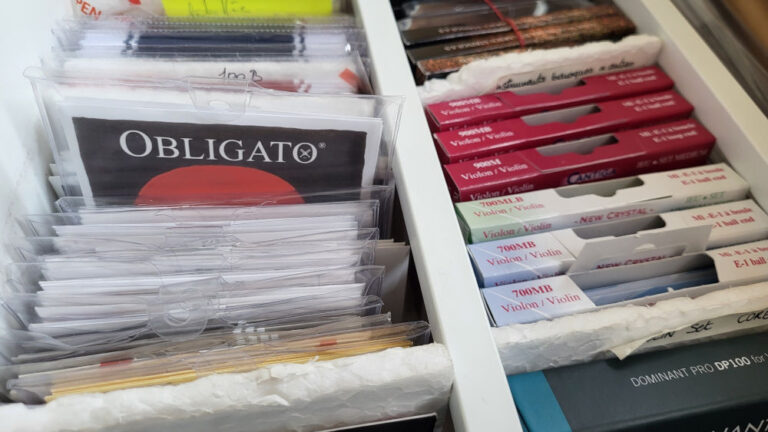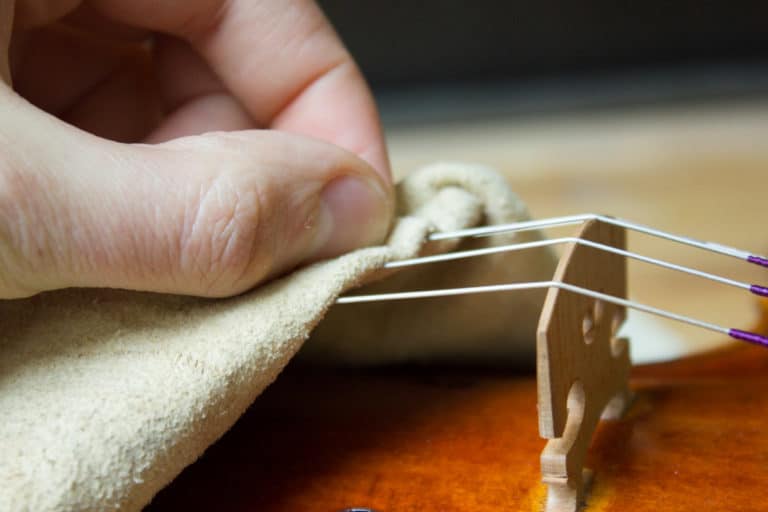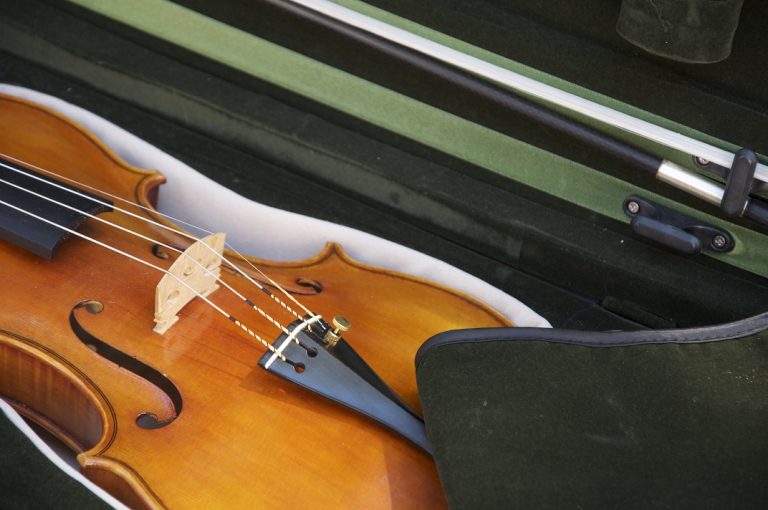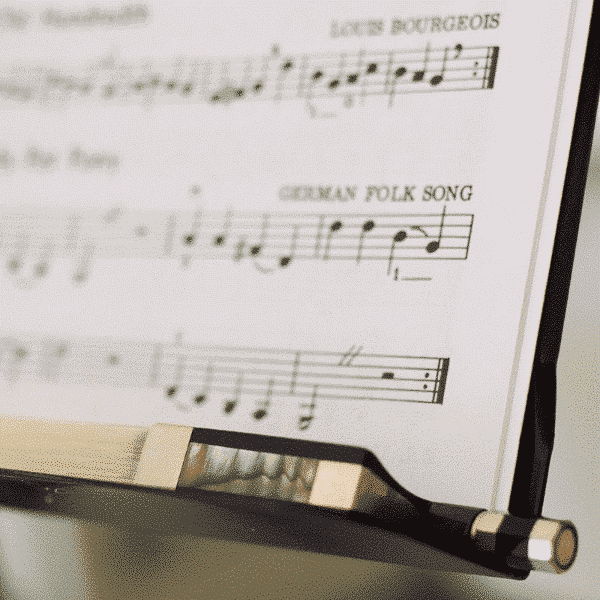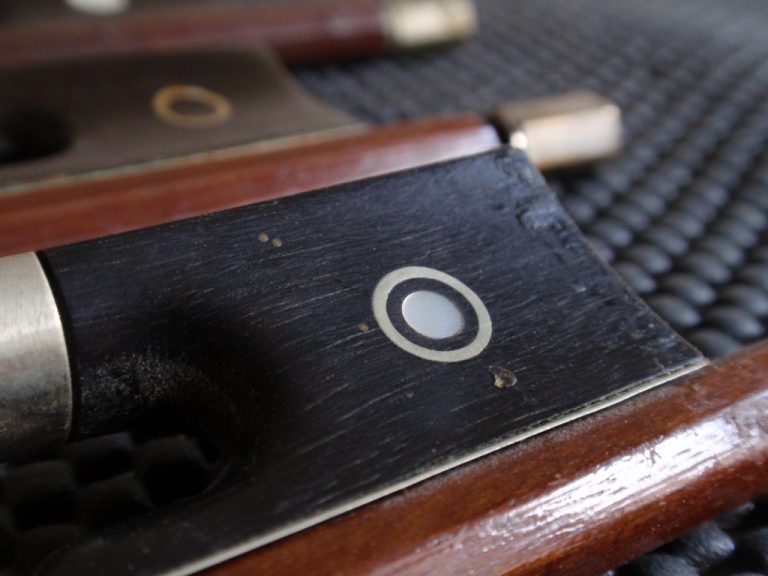Following on from the article on measuring bowed stringed instruments, here's a reference for violin, viola, cello and double bass bow sizes. The aim here is not to judge the quality of a bow, but rather to give you a reference so that you can determine what type of bow you have in your hands. This will help you to understand whether you have the right size bow in your hands, or what size bow you should buy.
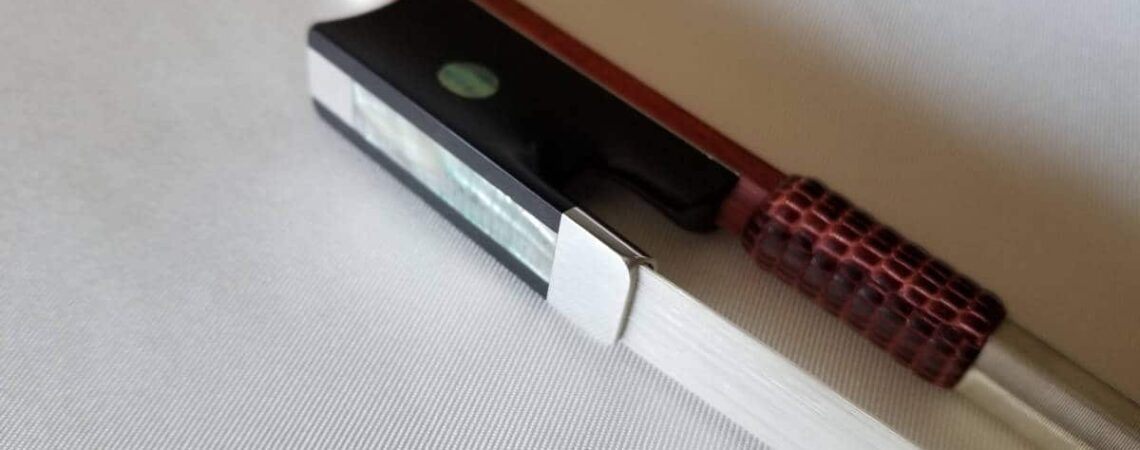
How to measure your bow?
Measuring the bow is primarily done by taking the length of the stick, from the button to the tip. This can easily be done with a tape measure or scroller.
As for weighing, a simple scale is all you need, but it must be accurate enough to easily read to the nearest gram. Of course, make sure that the rod does not touch the support on which the scale rests, otherwise the result will be incorrect.
What to do with the bow size?
Each bow will have a different weight, balance and length, even if they are based on the same model. In fact, each one will be as individual as the violin, viola or cello it's intended to play. But since we're not here to judge bows, we'll simply focus on the sizes and weights expected to play a given instrument. These are average figures, so they may vary slightly without really affecting quality. In fact, it's more a question of suiting the musician's tastes and needs.
Varying bow weight
Although it's rather difficult to change the length of the wand, its weight and therefore its balance can be altered in several ways by playing with its components.
- The silver or nickel silver winding can be thicker or thinner, and a silver silk thread can be used to lighten the overall effect.
- The mass of the wick also plays an important role in the weight of the bow.
- Certain parts can be weighted to modify the balance of the wand.
But that's irrelevant to the subject of this page. We'll come back to this in an article dedicated to bow balance.
Bow sizing for violin, viola, cello and double bass
You can use these tables to :
- First, match a bow you own with an instrument.
- Next, find the right bow size for your instrument.
- Finally, determine whether you are using the right combination of instrument and bow.
Violin bow sizing |
||
|---|---|---|
| Instrument size | Length(in centimetres) | Weight(in grams) |
| 4/4 | 74,5 | 60g |
| 3/4 | 69 | 55g |
| 1/2 | 62 | 49g |
| 1/4 | 55 | 46g |
| 1/8 | 50 | 42g |
| 1/10 | 46 | - |
| 1/16 | 43 | - |
Reference height and weight - In reality, these measurements vary slightly.
Viola bow size |
||
|---|---|---|
| Instrument size | Length(in centimetres) | Weight(in grams) |
| 4/4 | 74,5 | 75g |
Reference height and weight - In reality, these measurements vary slightly.
For small violas, there's really no ideal solution. In this case, you'll generally have to take a violin bow and live with it.
Cello bow sizing |
||
|---|---|---|
| Instrument size | Length(in centimetres) | Weight(in grams) |
| 4/4 | 72,5 | 80 |
| 3/4 | 67 | 74 |
| 1/2 | 63 | 68 |
| 1/4 | 59 | 61 |
| 1/8 | 56 | - |
| 1/10 | 50 | - |
| 1/16 | 48 | - |
Reference height and weight - In reality, these measurements vary slightly.
Size of double bass bows |
||
|---|---|---|
| Instrument size | Length(in centimetres) | Weight(in grams) |
| 4/4 | 70 | 135 |
Reference height and weight - In reality, these measurements vary slightly.
Why do bows come in different lengths?
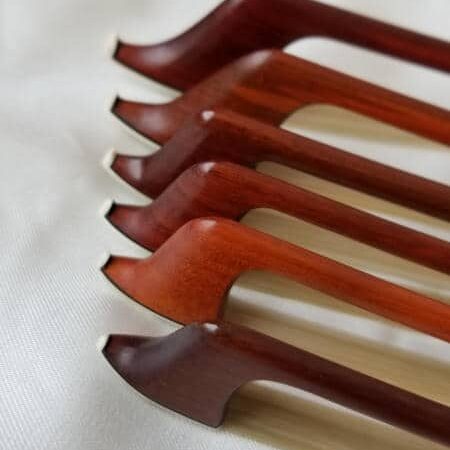
If you look closely at the pictures, you'll see that the bow ofa violin is larger than that ofa cello ordouble bass. And yet, you'd think that since the instrument is smaller, the stick could probably be too. In fact, the opposite is true!
In fact, it all comes down to the different pitches derived from the frequency at which a string vibrates. For the highest notes(violin), the string actually has to vibrate faster to maintain resonance. Without this, bow strokes will cause interference with the string, producing a rather disappointing sound. As a result, the bow will always have to move faster on higher-pitched instruments.
It's for this reason that holding a note over the same period without going back and forth will require more length on a violin. Hence the explanation of different bow lengths.
Small bows are for children and are designed more for morphological reasons. They will enable them to develop good movement habits from an early age.
Matching bow to instrument
Finally, if you want to match your bow to an instrument size, you can also read this article.
[blog_posts items="1″ orderby="date" ids="2073″]

